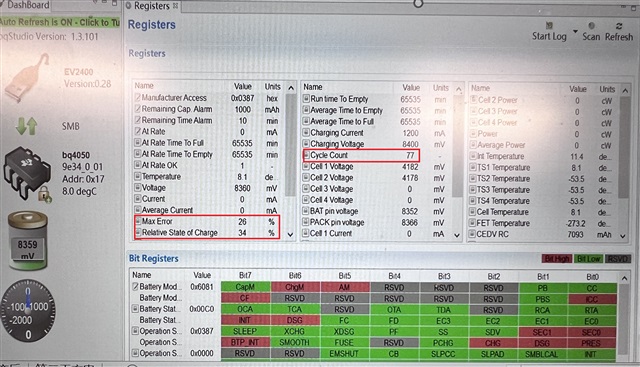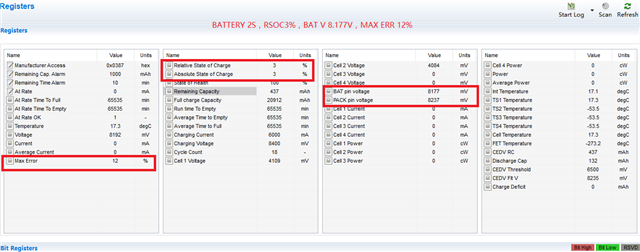Other Parts Discussed in Thread: GPCCEDV, BQSTUDIO
Hi all,
This is Brian, I am writing to check with you about the SOC jump for BQ4050. Here are the details:
- My customer uses BQ4050 as the solar monitor, which charges during the day and discharges during the night.
- The cell they used has the function of heating mechanism, which begins when the core temperature is less than -3 °C and stop heating at 9 °C. Up to 6~7 heating movements may occur during the day.
- The SOC jump always occurs when it is sunrise to start charging, SOC can jump from a lower charge (3% to 80%) to 100%. And at that time the voltage is generally higher, about 8.1V ~ 8.4V.
- And also when the sun goes down, SOC can also jumps down occasionally, the jump value is usually the charge value of the sunrise charge time.
- The jump always related to the temperature. It mostly appears when the temperature is below zero or it changes from above zero to below zero .
The attachment is partially abnormal data.
And here are two questions:
- I have recommended them to try the method related to E2E: BQ4050: A giant skip of a smart battery using bq4050 gague in low temperature(-20℃) - Power management forum - Power management - TI E2E support forums
- But they find the jump is still there. And in their application, they may not reach EDV2 for a long time, so the FCC will not update neither, and they also find the FCC data is not significantly deviated. So could you please kindly help to find the root cause of the SOC jump?
- Whether or not the CEDV PROFILE1 has a strong constraint on RSOC? Why there’s nothing happens when a jump occurs?
Thanks &Best Regards,
Brian Li




